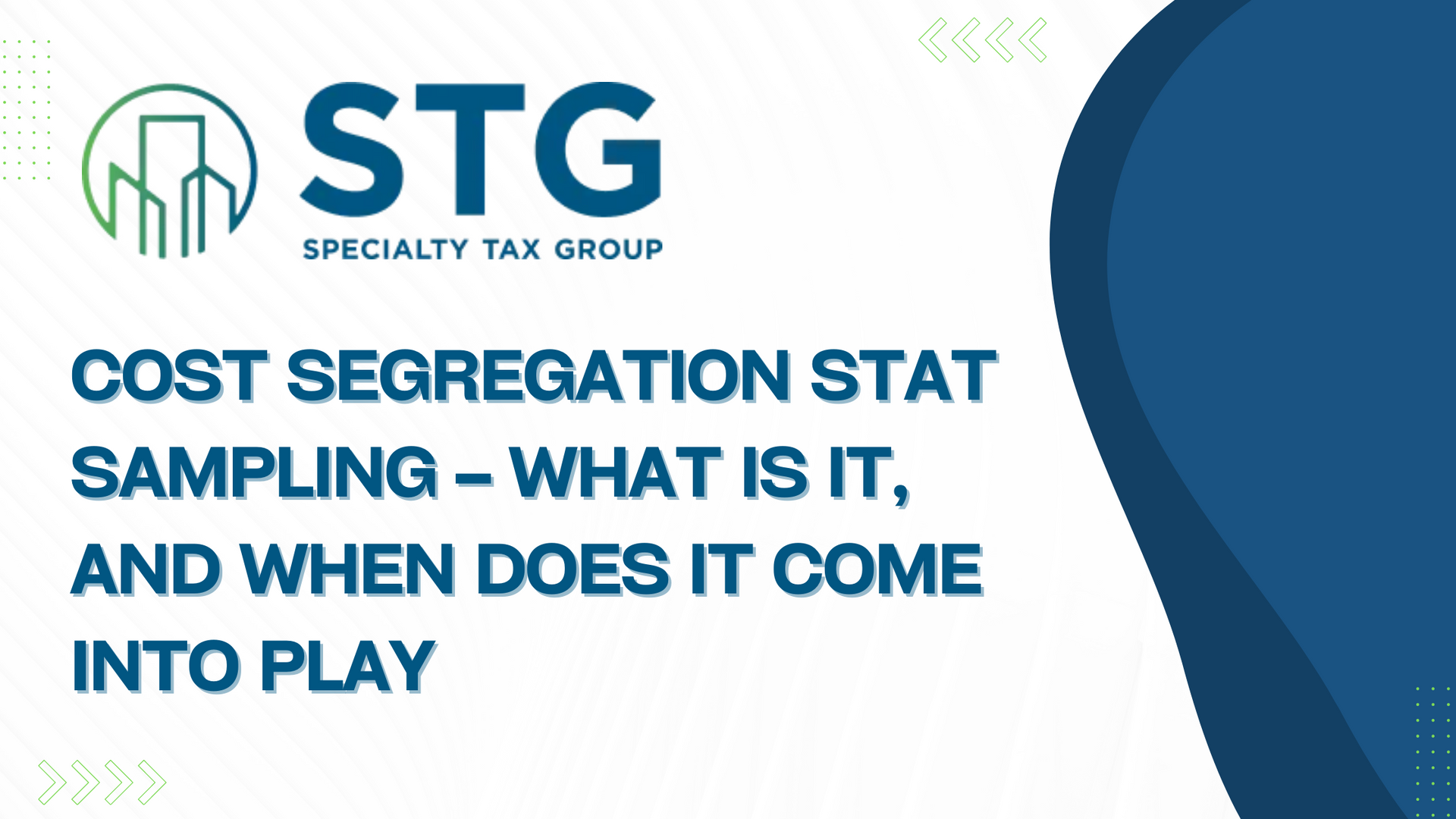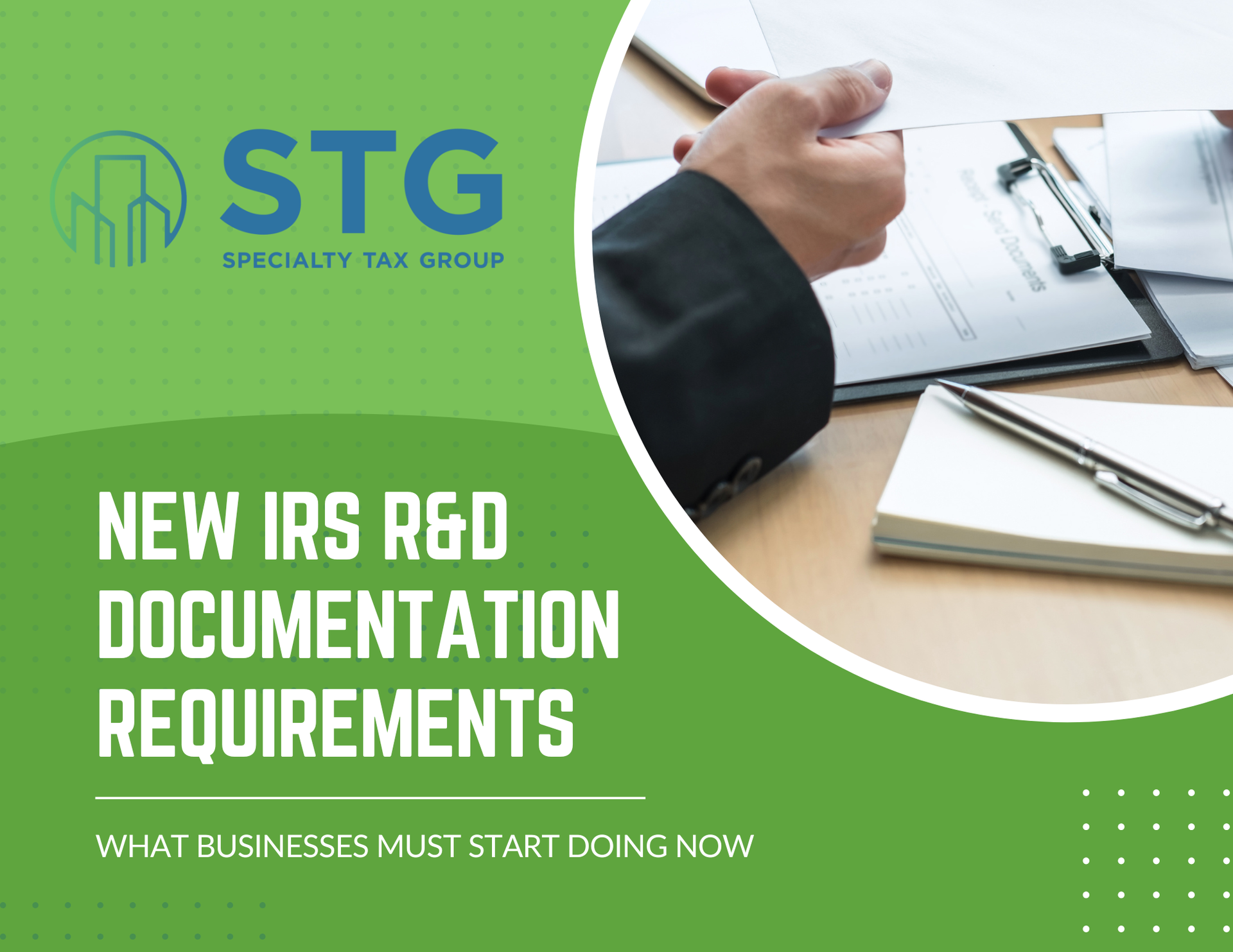This blog post has been researched, edited, and approved by John Hanning and Brian Wages. Join our newsletter below.
Cost Segregation Stat Sampling – What is it, and when does it come into play.
Cost segregation statistical sampling is a powerful tool used primarily for large portfolios, typically with 100+ properties. This method can significantly impact property owners' tax planning strategies, potentially reclassifying 20% to 40% of a property's components for accelerated depreciation. For property owners with such portfolios, this approach leads to substantial tax savings and improved cash flow.
Understanding Cost Segregation Statistical Sampling
Statistical sampling in cost segregation studies is a scientific approach to analyzing and categorizing building components for tax purposes. Unlike judgmental sampling, which relies on subjective expert opinions, statistical sampling employs mathematical principles to ensure accuracy and defensibility.
The process involves:
- Identifying assets for potential reclassification
- Determining an appropriate sample size based on statistical principles
- Selecting a representative sample of building components
- Conducting a detailed analysis of the sampled items
- Extrapolating results to the entire property
This methodology is particularly useful for portfolios of 100+ properties, especially when each property has a lower basis cost (such as $60K-$70K), where examining every single component would be impractical or cost-prohibitive.
IRS Guidelines and Requirements
The Internal Revenue Service (IRS) has established specific guidelines for statistical sampling in cost segregation studies.
These requirements ensure the reliability and accuracy of the results:
- Confidence levels must typically be at least 95%
- Relative precision should not exceed 10%
- Acceptable sampling methodologies include stratified random sampling and cluster sampling
- Comprehensive documentation and reporting standards must be met
Adhering to these guidelines is crucial for defending the study in case of an IRS audit. Property owners should work with experienced professionals who are well-versed in these requirements to minimize risk and maximize benefits.
When to Use Cost Segregation Statistical Sampling
Cost segregation statistical sampling is typically used for:
- Large portfolios of 100+ properties, especially when individual properties have a lower basis cost (such as $60K-$70K)
- Multi-unit residential complexes
- Portfolios with a depreciable basis exceeding $1,200,000
It is generally reserved for property owners with large portfolios due to the efficiency it provides. Statistical sampling allows for accurate analysis without the need to examine every component, making it ideal for substantial property holdings.
The timing of the study is also important. While a study can be conducted any time after property acquisition or improvement, performing it during the year of construction, purchase, or remodel maximizes the tax benefits from the outset.
Maximizing Tax Benefits Through Cost Segregation
By employing statistical sampling in cost segregation studies, property owners can:
- Accelerate depreciation on qualifying assets
- Reclassify components for optimal tax treatment
- Improve cash flow through increased tax deductions
- Achieve a higher return on investment (ROI) for their properties
For example, a component typically depreciated over 39 years as part of the building structure might be reclassified to a 5, 7, or 15-year depreciation schedule, resulting in significant front-loaded tax savings.
Potential Challenges and Considerations
While the benefits of cost segregation statistical sampling are substantial, it’s important to acknowledge the potential challenges:
- The complexity of the process requires specialized knowledge
- Professional expertise is essential for accurate implementation
- Audit risk must be managed through proper documentation and adherence to IRS guidelines
Property owners should conduct a thorough cost-benefit analysis before proceeding with a study. In most cases, the tax savings far outweigh the costs of the study, but each situation is unique and should be evaluated individually.
Cost segregation statistical sampling is a sophisticated tax strategy that can yield significant financial benefits for property owners with large portfolios. By leveraging this approach, investors can optimize their tax positions and improve their overall financial performance. To ensure the best possible outcome, it’s crucial to partner with experienced professionals who can navigate the complexities of this process.
Ready to explore how cost segregation statistical sampling can benefit your property investments?
Contact Specialty Tax Group today for a comprehensive analysis and expert guidance on maximizing your tax savings through strategic cost segregation studies.
FAQs About Cost Segregation Statistical Sampling
What is cost segregation statistical sampling?
Cost segregation statistical sampling is a method used to analyze and categorize property components for accelerated depreciation. It involves selecting a representative sample of building assets to determine which ones can be reclassified for faster depreciation, resulting in tax savings.
How does statistical sampling differ from traditional cost segregation?
Traditional cost segregation often relies on expert judgment to reclassify assets, while statistical sampling uses mathematical principles and a representative sample to ensure accuracy and defensibility. This approach is particularly beneficial for large or complex properties where analyzing every component would be inefficient.
What are the IRS requirements for statistical sampling in cost segregation?
The IRS requires that statistical samples meet a 95% confidence level and have no more than 10% relative precision. Additionally, acceptable sampling methods include stratified random sampling and cluster sampling, and all studies must include comprehensive documentation.
What types of properties benefit most from cost segregation statistical sampling?
Large commercial properties, multi-unit residential complexes, and properties with a depreciable basis exceeding $1,200,000 are ideal candidates for cost segregation statistical sampling. This method is particularly effective when the property has numerous similar assets.
Can cost segregation studies be conducted after property acquisition?
Yes, cost segregation studies, including statistical sampling, can be performed any time after property acquisition or improvement. However, conducting the study during the year of construction, purchase, or renovation typically yields the most significant tax benefits.
2024 Tax Guide






